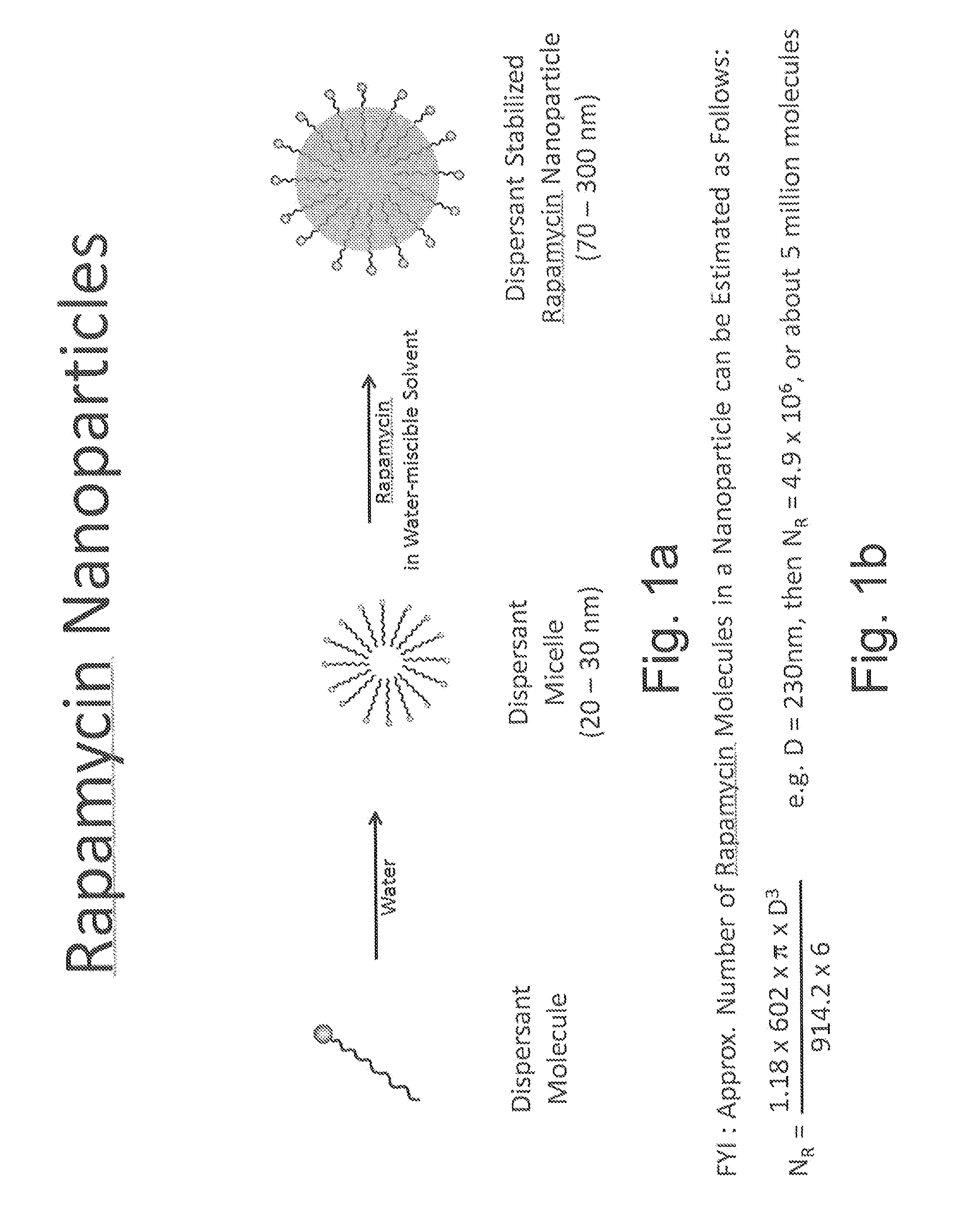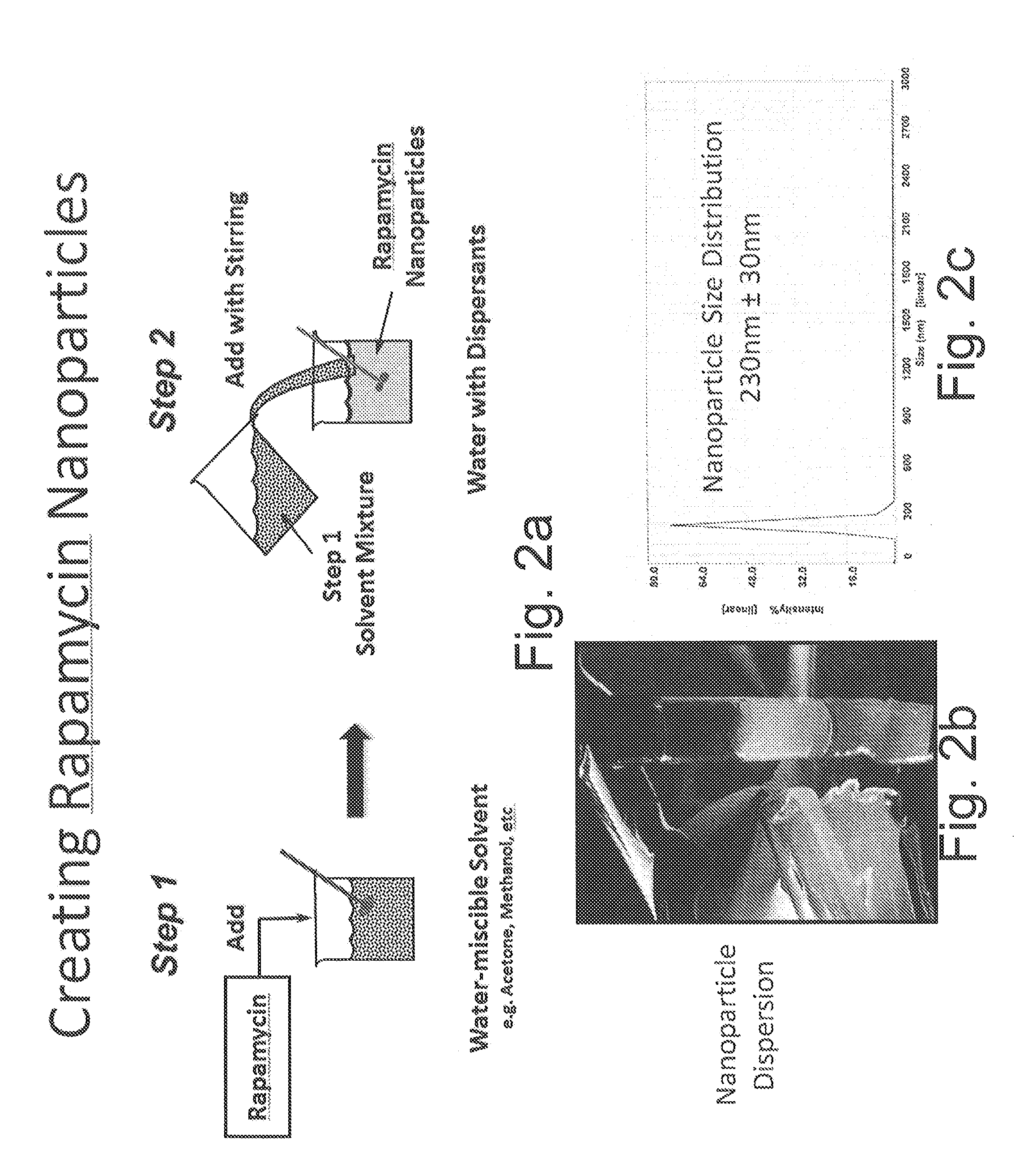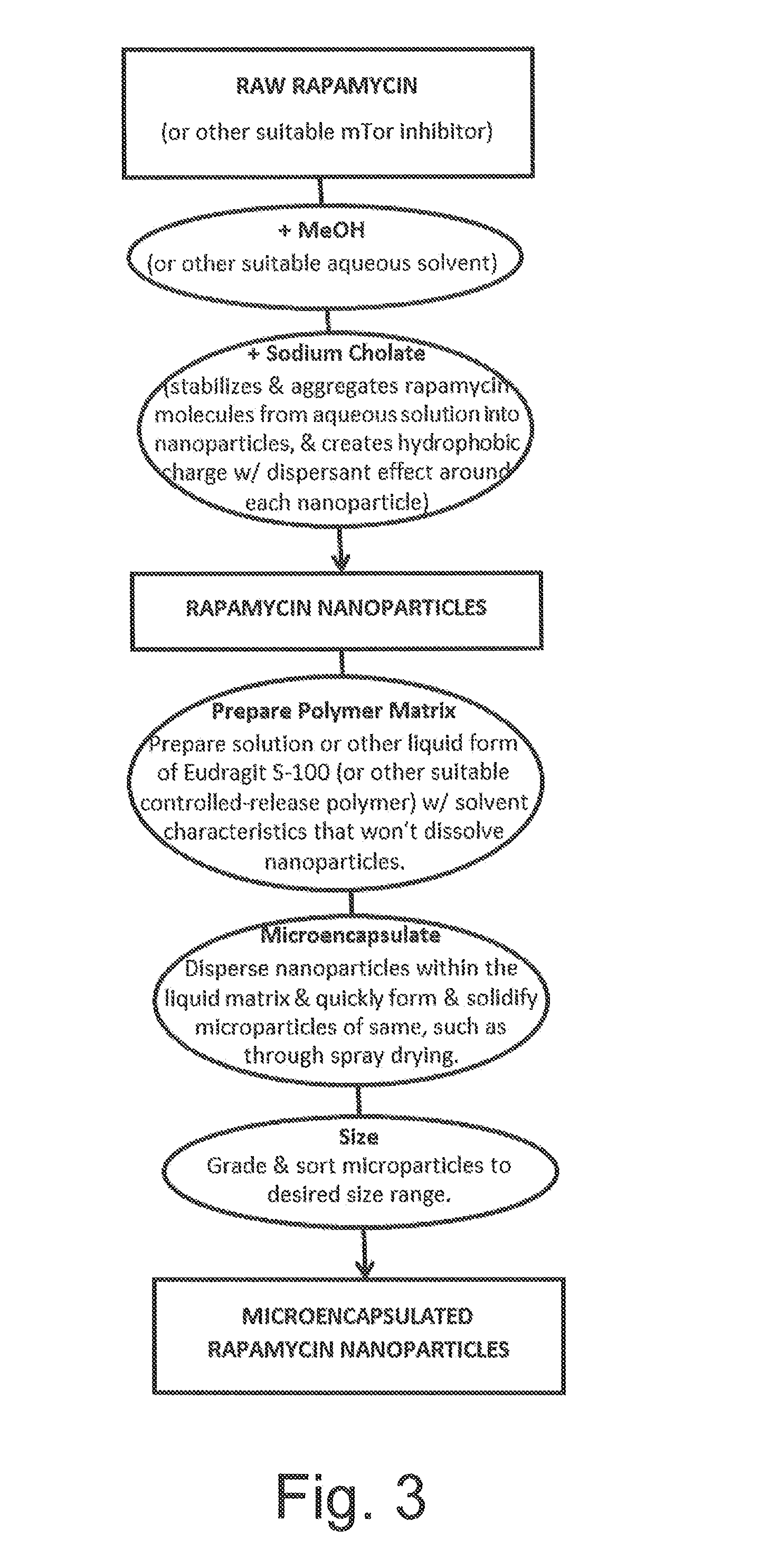Oral Rapamycin Nanoparticle Preparations
- Summary
- Abstract
- Description
- Claims
- Application Information
AI Technical Summary
Benefits of technology
Problems solved by technology
Method used
Image
Examples
example 1
Development of Methods to Produce Rapamycin Nanoparticles
[0049]Rapid solvent exchange was used to examine the formation of rapamycin nanoparticles. Three water-miscible solvents and three water-soluble surfactants were selected to study their respective effects on the formation and morphology of rapamycin nanoparticles. The water-miscible solvents were isopropyl alcohol (Solvent 1), acetone (Solvent 2), and methanol (Solvent 3). The water-soluble surfactants were Pluronic F-68 (Dispersant 1, a non-ionic PEO-PPO-PEO block copolymer), Pluronic F-127 (Dispersant 2, a non-ionic PEO-PPO-PEO block copolymer), and sodium cholate (Dispersant 3, an anionic surfactant). Rapamycin was dissolved in each of the water-miscible solvents at a concentration of 0.25% w / v. The water-soluble surfactants were dissolved in deionized water at concentrations of 0.5% w / v, 0.5% w / v, and 1.0% w / v, respectively, for each of the dispersants. Each experimental combination (e.g. NP-1 to NP-9 in following table) c...
example 2
Preparation of a High Concentration Rapamycin Nanoparticle
[0050]dispersion. The water-miscible solvent and water-soluble dispersant of NP-9 from Example 1 was used to prepare rapamycin nanoparticles. 656 mg of rapamycin were dissolved in 6.56 mL of Solvent 3 to yield a 1.0% w / v solution. This volume of rapamycin solution was injected into 26.25 mL of 1.0% w / v Dispersant 1 in deionized water. The resulting rapamycin nanoparticle dispersion had a final rapamycin content of 2.4% w / w. The particle size of the dispersion was determined by dynamic light scattering to be 230 nm±30 nm with a single peak.
example 3
Preparation of a Water-Soluble Enteric Coating
[0051]3.5 g of EUDRAGIT® S-100 were added to 70 mL of deionized water with light stirring, resulting in a white dispersion. 1.4 g of sodium hydroxide were added to the dispersion with continued stirring. The resulting dispersion gradually turned clear and colorless indicating an aqueous solution of S-100. The estimated concentration of sodium hydroxide was 0.5N.
PUM
| Property | Measurement | Unit |
|---|---|---|
| Stability | aaaaa | aaaaa |
| Storage stability | aaaaa | aaaaa |
Abstract
Description
Claims
Application Information
 Login to View More
Login to View More - R&D
- Intellectual Property
- Life Sciences
- Materials
- Tech Scout
- Unparalleled Data Quality
- Higher Quality Content
- 60% Fewer Hallucinations
Browse by: Latest US Patents, China's latest patents, Technical Efficacy Thesaurus, Application Domain, Technology Topic, Popular Technical Reports.
© 2025 PatSnap. All rights reserved.Legal|Privacy policy|Modern Slavery Act Transparency Statement|Sitemap|About US| Contact US: help@patsnap.com



